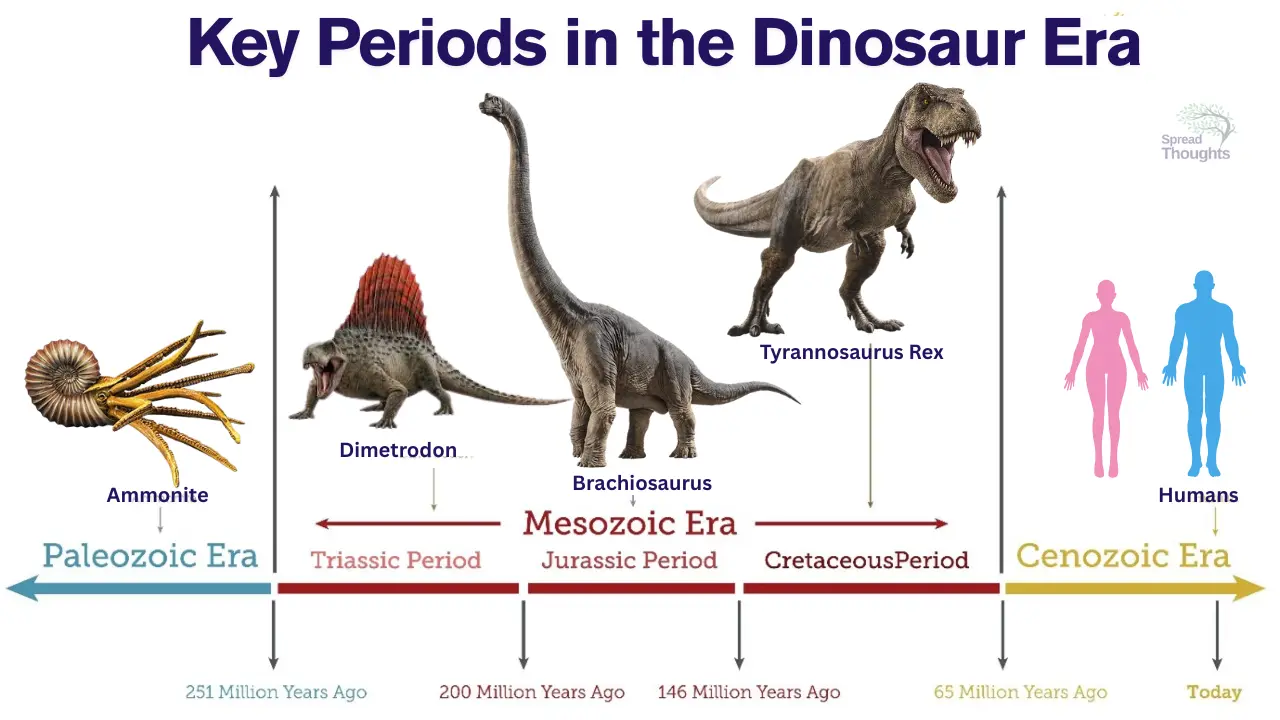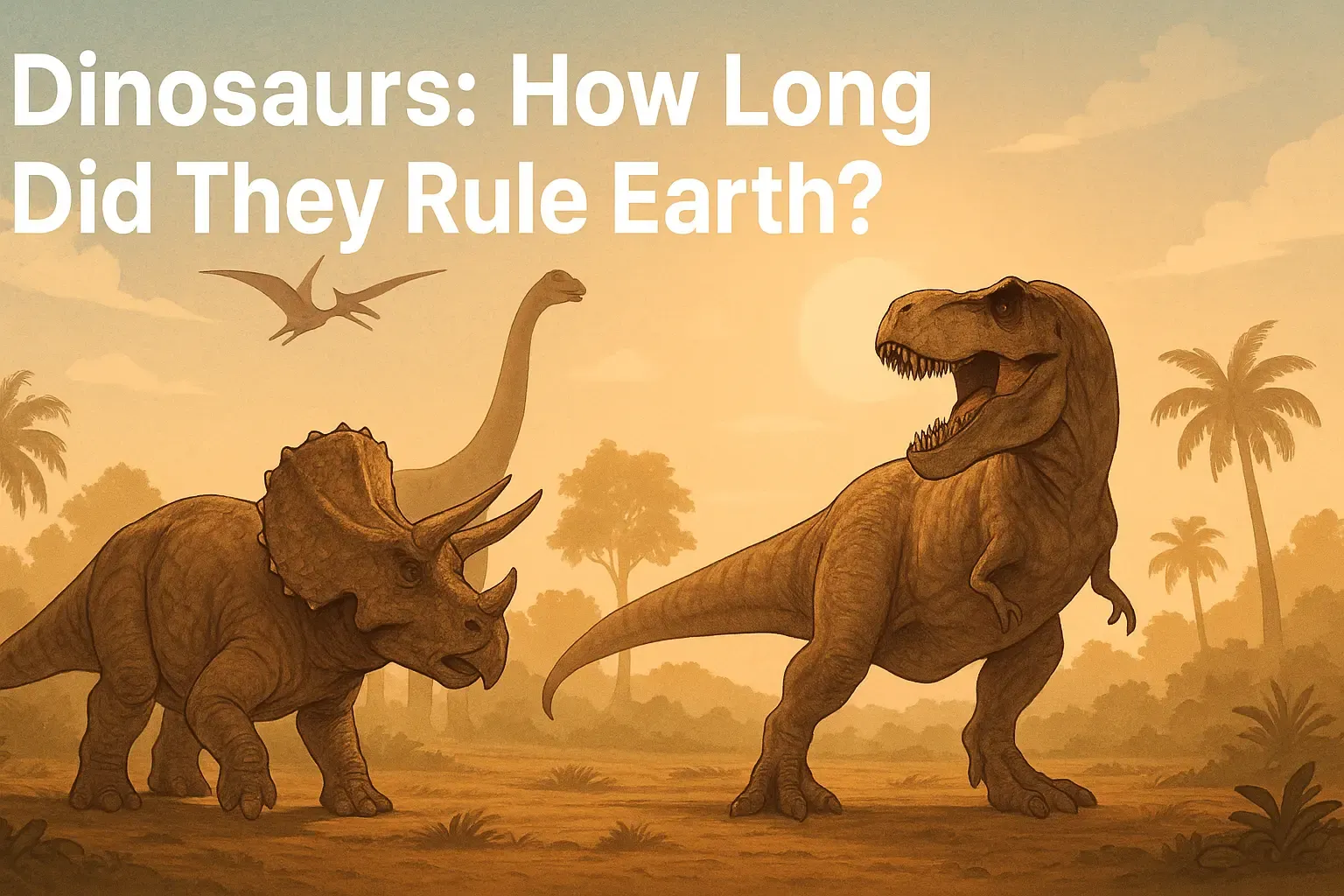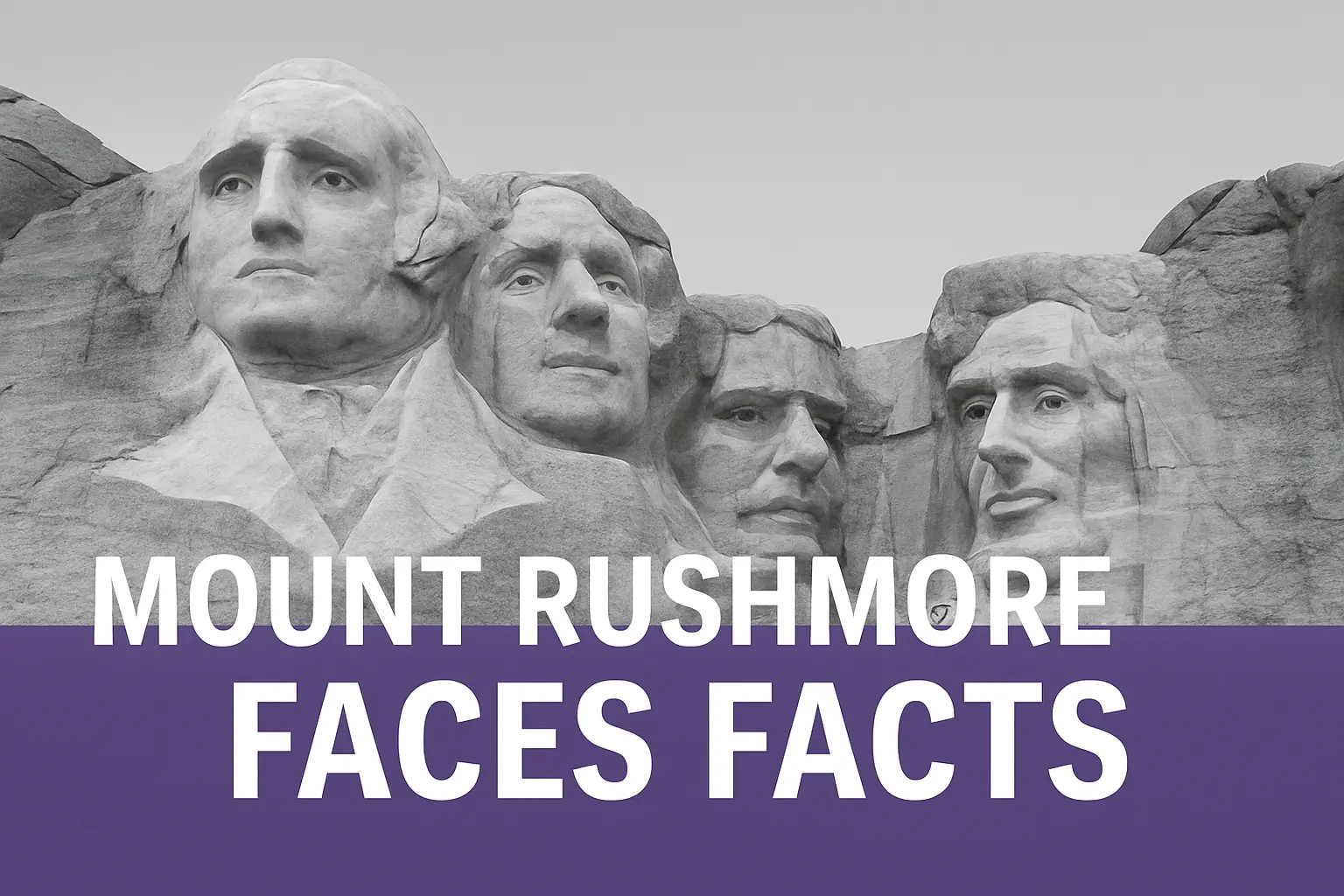Can you imagine giant dinosaurs stomping around, ruling the entire globe? Yes, that’s exactly how the Earth used to be! If you are willing to know their intriguing story, let’s discover how they started, how long they ruled, and what ended their journey. They ruled Earth for millions of years, and it was truly a wild ride to say. Let’s delve deep to explore when the dinosaurs first appeared, how they dominated, and why most of them disappeared. Are you ready to unlock the secrets? Come, jump in to discover a 183-million-year adventure!
Origin and Evolution of Dinosaurs
It’s obvious that dinosaurs just didn’t pop up overnight. They first appeared around 230 million years ago in the Triassic period. Archosaurs, a group of reptiles, evolved to develop into dinosaurs. Earth was different then- just a massive landmass known as Pangaea with a large number of volcanoes and early animals. The very first ones were not giants, but they were a bit small.
Imagine Eoraptor, a small creature, just around 3 feet long, consuming meat or vegetation with sharp teeth. Also, Herrerasaurus, a larger one, goes after smaller animals. These animals were not the rulers of the land then; much bigger reptiles were the bosses. Around 201 million years ago, a major disaster took the lives of most of these rivals. Now, these mighty creatures have a chance to dominate the world. They were fast and stood tall, to grow into massive ones. They adapted themselves to different environments.
Types of Dinosaurs and Their Adaptations
Dinosaurs were classified mainly into two groups depending on their hip structures:
- Saurischian: These lizard-hipped dinosaurs include both carnivorous dinosaurs such as T-rex and huge herbivores like brachiosaurus.
- Ornithischian: These bird-hipped dinosaurs mostly include vegetation lovers, such as Stegosaurus and Triceratops.
Dinosaurs evolved several features to adapt for survival. These include developing large teeth and massive claws for hunting, and some had long necks or armor to reach food. Their diversity made their survival easy in a wide range.
How did Dinosaurs dominate other animals?
Dinosaurs dominated other reptiles pertaining to their strong legs, highly effective breathing technique, and, most importantly, adaptability. With the rise of the Jurassic period, they spread all across the planet, growing larger and reaching the top of predators and herbivores of their era.
How Long Did Dinosaurs Rule the Earth?
The Mesozoic Era: Age of the Dinosaurs
Dinosaurs were the bosses of the entire Earth for around 165 million years, from the Triassic period to the end of the Cretaceous period. Compared to the dinosaur era, humans have been on the Earth for just 300,000 years, meaning that these massive creatures ruled the Earth for over 500 times more than we humans have existed.
Key Periods in the Dinosaur Era
Dinosaurs survived on Earth for these three major periods:

- Triassic Period: Dinosaurs first appeared on Earth around 200-250 million years ago, but they were not the rulers then.
- Jurassic Period: Dinosaurs evolved and established themselves as the most powerful creatures on Earth 145-200 million years ago.
- Cretaceous Period: Dinosaurs were at their peak, evolving into a varied range of species before they became extinct.
The success behind the dominance of these massive creatures lies in their adaptability. They developed their flying ability, converting into modern birds. On the other hand, plant eaters had lots of vegetation to consume on planet Earth, displaying their dominance for a million years.
Extinction of Dinosaurs
When Did Dinosaurs Go Extinct?
Something that is created is meant to destroy, and that is what happened with the dinosaurs 66 million years ago. A giant asteroid, believed to be 6 miles wide, hit the Earth near Mexico. The impact of the crash was similar to a billion bombs. As the asteroid struck Earth, it led to massive wildfires, tsunamis, and drastic climate change. There was dust all around, making no way for the sunlight to reach Earth’s surface, leading to a temperature drop, causing the plants to die.
You can witness this crash on the ground even today. The plant-eater dinosaurs like Triceratops were not able to survive due to a lack of food, and even meat-eaters like T Rex starved. It was a complete mess. As per some scientists, massive volcanoes also erupted, and changing sea levels may have played a pivotal role in their extinction. These drastic environmental changes resulted in their extinction.
Timeline of Dinosaur Reign vs Humans
After the dinosaurs became extinct, it was the mammals that dominated Earth. With much less competition for resources, they evolved fast and diversified. This is what led to the rise of primates, and eventually, after a million years, humans came into existence. Yes, all dinosaurs did not vanish. Those who evolved into small birds survived, meaning that they are still with us today. For instance, a pigeon sitting outside your window may be a dinosaur that made it through! Yes, their dominance did end, but surely they left something behind. Compared to humans, who have existed for about 300,000 years, the dinosaur reign was vastly longer.
It is also a fact that if the asteroid had not hit Earth or resulted in drastic environmental changes as it did, dinosaurs might continue to evolve. To your surprise, scientists even speculate that these massive creatures could have developed much higher intelligence, reaching new heights of dominance.
Final Words
Dinosaurs ruled the Earth for over 180 million years, evolving into some of the greatest creatures ever created in history. An asteroid that hit with tremendous impact led to their extinction, but their legacy persists in the existence of small birds. You’ve discovered how they appeared, dominated, and suddenly got extinct following a disaster, passing the torch to the small birds that you see now. Want to know about these creatures? Visit a museum, wander around their fossils, or just witness a bird hop around you- yes, it’s a tiny dinosaur.
FAQs
How Long were Dinosaurs on Earth as Compared to Humans?
Dinosaurs ruled Earth for around 183 million years. Humans have been on Earth for about 300,000 years, that’s too less as compared to them!
Which dinosaur survived the longest?
It was not any one particular dinosaur that survived for 183 million years, but giant groups of long-necked dinosaurs like sauropods survived for over 100 million years.
Where can you witness dinosaur fossils now?
You can visit dinosaur fossils at a museum in New York or Canada’s Royal Tyrrell Museum. Even places like Utah’s Dinosaur National Museum offer you stunning views of dinosaur bones in the dirt.
Which was the largest dinosaur?
The Argentinosaurus was one of the biggest, reaching up to 100 feet in length.
What dinosaur has 500 teeth?
Nigersaurus is a plant-eating dinosaur with 500 teeth. It was found in Sahar Desert in Niger, Africa.
Earth holds many secrets, from Antarctica’s eerie Blood Falls to fossilized giants like Argentinosaurus.













